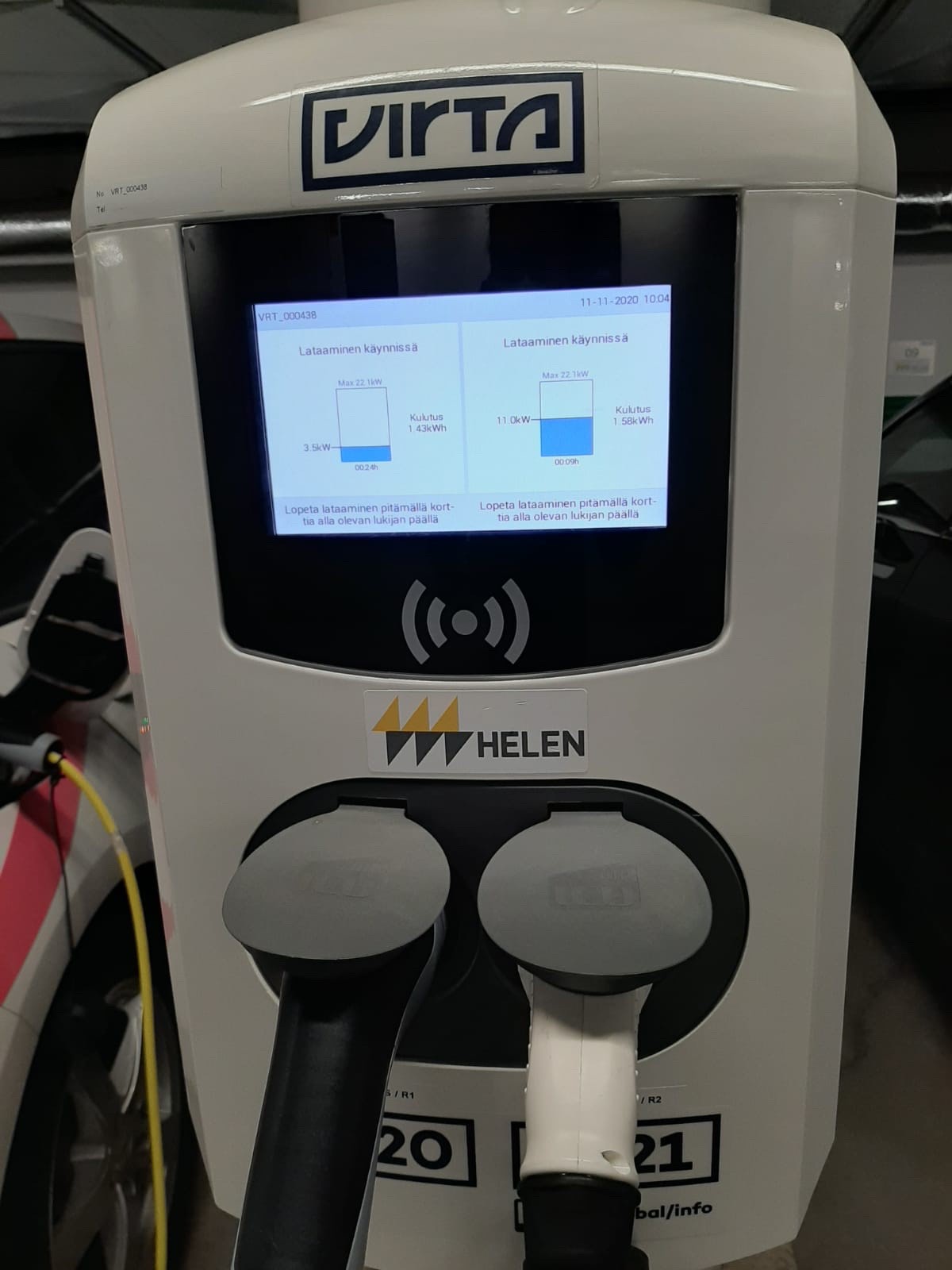EU-SysFlex blog: Batteries and EV charging points as electric grid balancers in a smart office environment
15.02.2021News As part of EU-SysFlex, an office scale battery energy storage system (BESS) together with 8 electric vehicle (EV) charging points located in a smart office environment in Helsinki, Finland provided research platforms for Helen, an energy company in Finland and Helen Electricity Network, the DSO in Helsinki. The general objective of the demonstration is to show how small, distributed assets, such as EV charging stations and the BESS, can be aggregated and traded on the reserve markets of the transmission system operator (TSO, Fingrid in Finland) and/or utilized for the needs of the local distribution system operator (DSO in Helsinki). The Aggregator (Helen) is developing new products for their business portfolio. The BESS is rated as 120 kW / 134 kWh and each EV charger as 22 kW max power (AC).
As part of EU-SysFlex, an office scale battery energy storage system (BESS) together with 8 electric vehicle (EV) charging points located in a smart office environment in Helsinki, Finland provided research platforms for Helen, an energy company in Finland and Helen Electricity Network, the DSO in Helsinki. The general objective of the demonstration is to show how small, distributed assets, such as EV charging stations and the BESS, can be aggregated and traded on the reserve markets of the transmission system operator (TSO, Fingrid in Finland) and/or utilized for the needs of the local distribution system operator (DSO in Helsinki). The Aggregator (Helen) is developing new products for their business portfolio. The BESS is rated as 120 kW / 134 kWh and each EV charger as 22 kW max power (AC).
The BESS is a versatile flexible asset when providing as well as peak power shaving, reactive power compensation and frequency containment reserve for normal operation (FCR-N). These functionalities were reliably and successfully tested during the demonstration period. Peak power shaving and reactive power compensation support the operation of the local distribution grid, and the service provision of FCR-N the operation of the power system. As part of this research, an operation strategy of these functions was presented. However, it was found out that many factors, especially power demand of the building, power tariffs and the prices of the FCR-N market affect the operational entity and profitability. During the tests the BESS was operated in a peak shaving mode during power tariff hours (Monday to Friday from 7 am to 9 pm) and in FCR-N control during night hours and weekends. Reactive power compensation was active all the time.
As a novel development stage, the BESS was controlled via an IoT platform and the operation logic functions were developed during the demonstration. The tests showed that an IoT platform can be used to precisely control the BESS in all operation modes. The BESS is not bidded to the FCR-N market yet. However, the development of a market integration function is ongoing and the BESS is to be bidded to the market before summer 2021.
As electric vehicles get more popular the total charging demand increases. One way to benefit from this is to utilize the charging to frequency contaminant reserve for disturbances (FCR-D) by lowering power input to the EVs when frequency drops below normal frequency. During the tests up to 4 EVs were charging at the same time. The study shows that limiting the power input to an EV is possible and in most cases accurate. However, in the worst tests the power reduction was only half of the requested power. This issue could be overcome with a larger EV test fleet. In addition, the response time for this operation indicated possible challenges to meet the strict technical requirements of the FCR-D market. It was found that the latency beginning from measuring the frequency value and power reduction realization was on average from 10 s to 70 s. The delay consists of several factors which are for example how fast the charge point gets the command from the server and how fast does the EV’s built in AC charger react to the signal from the charge point.
An interesting future question is how to combine local flexibility service provisions with the reserve market operations and what is the business potential of flexibility service provisions from the perspective of the asset owner. A solution could combine the EV charging and BESS to provide peak shaving in a smart office building.
Written by: Oliver Ojala, Pirjo Heine and Lauri Jännes from Helen.
For further information please follow us on www.eusysflex.com, LinkedIn, Twitterand Facebook.
Disclaimer: blog entries reflect individual views of the author(s) that may not reflect official positions or communication of the project / project consortium.